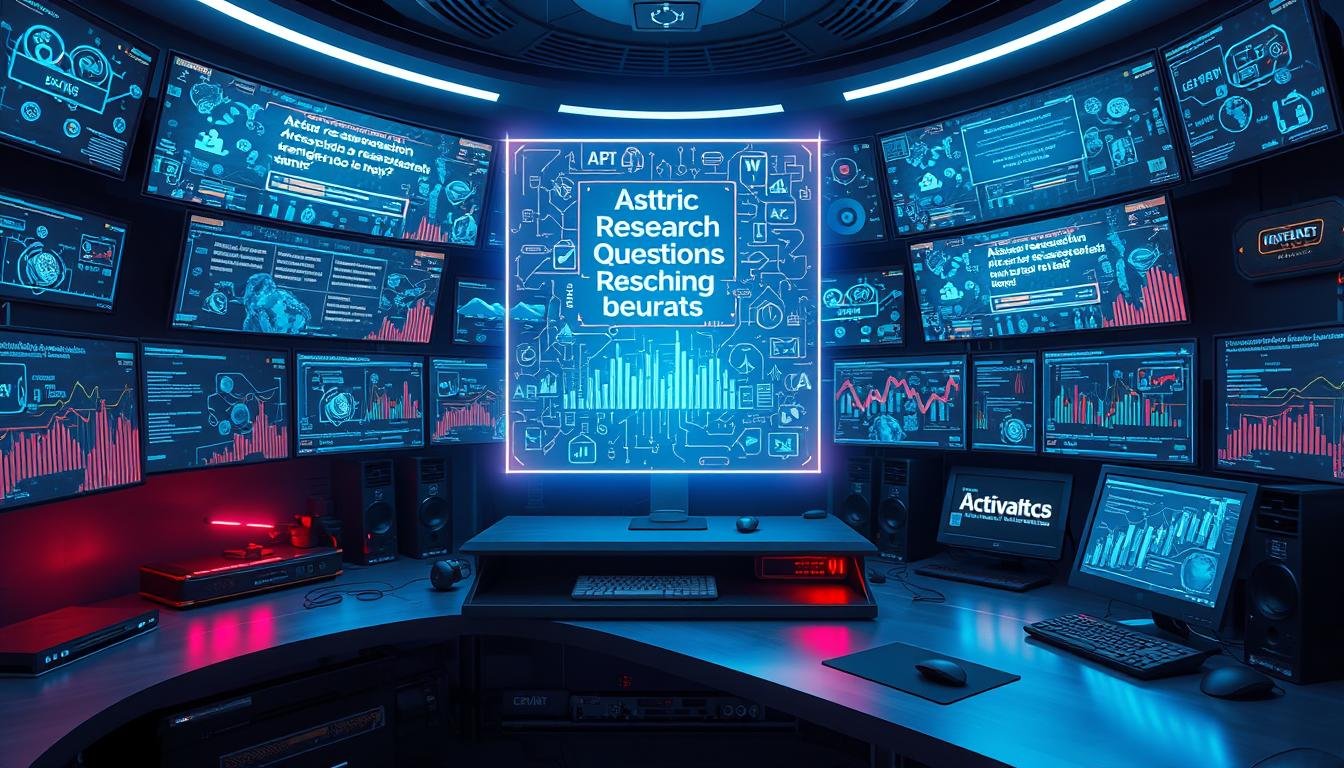Data Storytelling Techniques for Research Presentations
November 18, 2024 | by Jean Twizeyimana

In today’s world, sharing data insights is key. Data storytelling mixes many skills to tell stories with numbers. It grabs people’s attention and helps them understand complex ideas.
This method is great for keeping people interested. It makes hard topics easy to get. It also helps make better choices.
Key Takeaways
- Data storytelling turns complex info into stories that move people to act.
- Good data storytelling meets audience needs by tailoring the message.
- Visuals and stories are key to telling data stories well.
- Picking the right data and tools boosts the power of data stories in presentations.
- Sharing data stories with confidence and engaging the audience is key to success.
Understanding Data Storytelling
Data storytelling is like telling a story with numbers. It uses data to make a point and share it with others. It’s about making complex data easy to understand.
What is Data Storytelling?
Data storytelling helps explain data in a way everyone can get. It uses pictures and words to make data simple. It’s about telling a story with data.
Importance of Data Storytelling in Research
Data storytelling is key for sharing research findings. It makes complex data easy to understand. Studies show that 63% of students remembered presentations based on a story, compared to only 5% that remembered presentations based on statistical analysis.
It helps organizations communicate better. It leads to better decisions and more innovation.
“Data storytelling focuses on communicating data-driven insights to audiences through compelling narratives.”
Good data storytelling has three parts: data, pictures, and a story. By choosing the right pictures and telling a great story, researchers can make a big difference.
Elements of a Compelling Data Story
Making a compelling narrative development is key when sharing data insights. A good data story has three main parts: data, story, and visual aids for presentations. These elements work together to make a persuasive storytelling skills that grabs your audience’s attention and leads to action.
Narrative Structure
A good data story has a story structure like traditional tales. It starts with characters, then sets the scene. Next, it shows a conflict or problem, and ends with a resolution. This structure makes the data story relatable and memorable.
Visuals and Data Representation
Visual aids for presentations are vital in data storytelling. Charts, graphs, and infographics make data come alive. They show patterns and trends that numbers alone can’t. These visuals help the audience understand and remember the main points.
Emotional Engagement
To really grab your audience, you need to touch their feelings. Persuasive storytelling skills help connect data to everyday life. This way, the audience feels the story more deeply. It leaves a strong impression and motivates them to act.
Combining data, story, and visuals is the secret to a compelling narrative development. By getting these elements right, you can tell data stories that engage, teach, and motivate. This leads to real change through visual aids for presentations and persuasive storytelling skills.

Analyzing Your Audience
Good data storytelling starts with knowing your audience. Before you begin, learn who they are and what they like. This helps you make a story that they will enjoy and want to share.
Identifying Audience Needs
First, think about what your audience knows and wants. Do they know a lot about your topic, or do they need a basic explanation? Knowing this helps you make your story easy to follow. Also, find out what they hope to get from your story.
Tailoring Your Message
After you know what your audience needs, make a message just for them. Use words and pictures that they can understand. For example, bosses might want to know how it affects the company. But data experts might want to see the numbers. Make your story fit what they care about most.
Finally, making your audience feel connected is key. Good communication helps your story reach them. By really getting to know your audience, you can make a story that grabs their attention and inspires them.
Crafting Your Narrative
Making a good story with data is key. You need to pick the right messages that match your goals and what your audience wants. Use a story structure to guide your audience through the data smoothly.
Selecting Key Messages
First, find the most important data that supports your main points. Choose messages that will hit home with your audience. Keep it simple and focus on the story that will stick with them.
Structuring Your Story
- Start with a hook that grabs attention and clearly states the problem. This should get your audience excited and ready for what’s next.
- Take your audience on a journey through the data. Use stories and examples to make it relatable and interesting.
- End with a strong message or call to action. Leave your audience feeling inspired and ready to act.
“The most powerful stories are those that resonate with the audience on an emotional level, connecting the data to their personal experiences and aspirations.”
By telling a well-structured story, you can share your key messages in a way that grabs your audience. This can lead to real change through your data storytelling.

Using Visual Aids Effectively
Visual aids are key in data storytelling. They help people understand and get excited about your message. By picking the right visuals, you can share your insights well and grab your audience’s attention.
Types of Visuals
There are many types of visual aids. You can use charts, graphs, diagrams, images, and even videos. Mixing different visuals can make your message more interesting.
- Charts and graphs to present data in a clear and concise manner
- Diagrams to illustrate processes, relationships, or complex concepts
- Photographs and illustrations to add visual interest and context
- Interactive visualizations that allow your audience to explore data in real-time
- Videos to bring your narrative to life and create an immersive experience
Tips for Creating Impactful Charts and Graphs
Creating charts and graphs needs care. Make sure they are simple and easy to understand. Use colors to highlight important points and keep your design the same. Don’t add too much data, as it can confuse people.
Focus on telling a story that grabs your audience. This way, your message will stick with them.
| Effective Data Visualization Techniques | Ineffective Data Visualization Techniques |
|---|---|
|
|
Learning to use data visualization well can make your presentations better. It helps you share your message in a way that grabs and keeps your audience’s attention.
Tools for Data Storytelling
To make great data stories, you need the right tools. There are many software options for data visualization, research, and analysis.
Popular Software Options
Here are some top data storytelling tools:
- Tableau: It has strong data visualization and interactive dashboards.
- Power BI: It’s a big business analytics tool from Microsoft with AI and natural language.
- ThoughtSpot: It’s an AI search and analytics platform for easy data exploration.
- Amplitude Notebooks: It helps improve data storytelling with performance reports and insight explanations.
- Infogram: It lets you make cool infographics and reports, free and pro versions.
- Visme: It’s easy to use for making data visualizations, presentations, and more.
Choosing the Right Tool for Your Presentation
When picking a tool, think about ease of use, data source compatibility, and features. Pick one that fits your needs and helps you make great visuals. The right tool can make your data story amazing and grab your audience’s attention.
| Tool | Pricing | Key Features |
|---|---|---|
| Tableau | $70/editor/month | Powerful data visualization, interactive dashboards |
| Power BI | $10/user/month | AI-driven insights, natural language processing |
| ThoughtSpot | Personalized quote | AI-powered search and analytics platform |
| Amplitude Notebooks | $12/editor/month | Enhanced data storytelling, performance reporting |
| Infogram | $25/month/user | Visually engaging infographics and reports |
| Visme | $25/month/user | User-friendly data visualization creation |

Using the right tools for data storytelling makes your visuals pop. Whether it’s Tableau, Power BI, or others, choose what fits your needs best. This way, you can share your insights in a way that grabs everyone’s attention.
Best Practices for Delivery
Getting your audience’s attention is key to making your research count. Use tactics that grab their interest and turn data into stories that matter. This way, you’ll make a big impact.
Engaging Your Audience
Start by asking questions that make them curious. Show your data slowly, building excitement. Share surprises that make them think differently.
Make your data personal by linking it to everyday life. This makes your research feel important and relatable. It gets your audience more into your story.
Practicing Your Presentation
Getting ready is essential for a great presentation. Practice a lot to get your timing and flow right. Ask for feedback to improve.
Be ready to change your presentation if needed. Stay flexible but keep your main message clear. This way, you can handle any surprises and keep your audience interested.
“Data storytelling is not just about presenting facts, but about creating a narrative that captivates and inspires action.” – Jane Doe, Data Visualization Expert
Focus on engaging your audience, clear communication, and storytelling. This will make your research presentation unforgettable.
Measuring Impact and Success
As data storytellers, we must measure our success. We do this by listening to our audience. We use surveys, interviews, and chats to learn what they liked and what we can do better.
We also look at how people engage with our stories. This includes how many questions they ask and if they follow up. By watching these signs, we know if our stories are working well.
Feedback Collection
Getting feedback from our audience is key. We can use:
- Surveys to get both numbers and stories
- Interviews for deeper talks
- Chats during breaks or later
Analyzing Audience Engagement
We also check how people interact with our stories. This means:
- Counting questions during the talk
- Seeing if they ask for more info
- Noticing if they act on our advice
By mixing feedback and engagement data, we learn a lot. This helps us make our stories even better for the future.
To get even better, we use tools to see how people interact with our digital stories. This helps us understand our audience better. It lets us make smarter choices and keep improving our stories.
Real-World Examples of Effective Data Storytelling
Looking at real examples of data storytelling can teach us a lot. For instance, the New York Times showed what it’s like to live on minimum wage. National Geographic showed 500,000 COVID-19 deaths in the US in a powerful way.
Case Studies
FiveThirtyEight did a cool analysis called “Which 2020 Candidates Have The Most In Common… On Twitter?” It showed how some presidential candidates have a lot of Twitter followers in common. The Washington Post also did something cool. They made a game out of redistricting to show how it affects politics.
Lessons Learned from Successful Presenters
Good data storytellers keep working on their story until it’s clear and short. They make sure it’s easy for everyone to understand. People like Giorgia Lupi use data to make us feel and think.
FAQ
What is data storytelling?
Why is data storytelling important for research presentations?
What are the key elements of a compelling data story?
How do I analyze my audience for effective data storytelling?
What are the best practices for crafting an effective data storytelling narrative?
How can I use visual aids effectively in data storytelling?
What tools are available for data storytelling and visualization?
How can I engage my audience during data storytelling presentations?
How can I measure the impact and success of my data storytelling efforts?
Where can I find examples of effective data storytelling to learn from?
RELATED POSTS
View all



